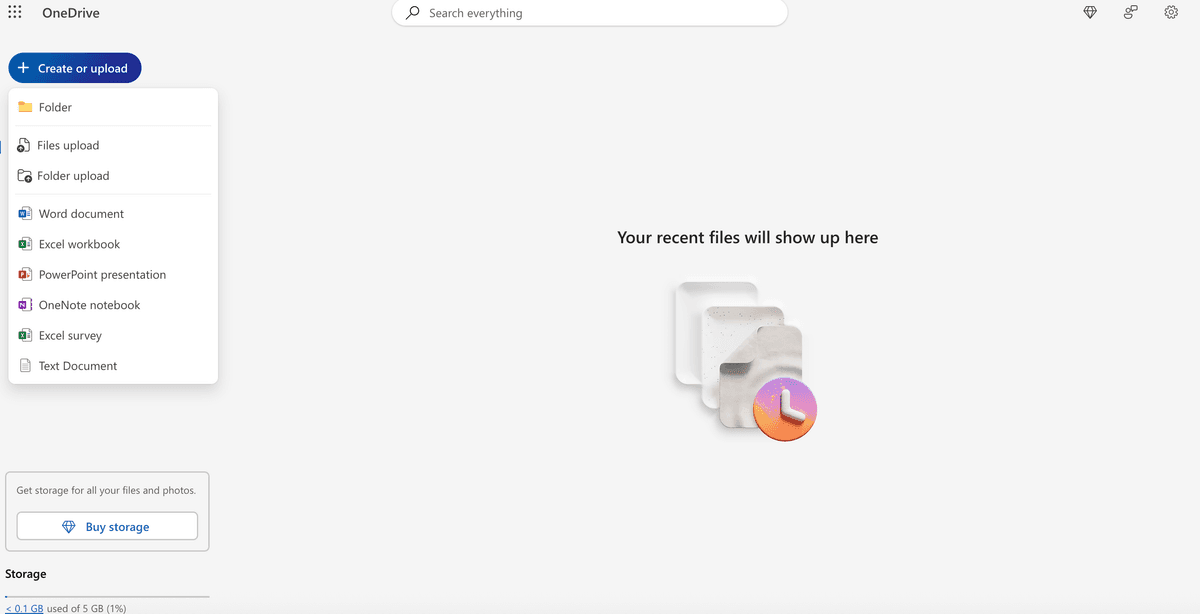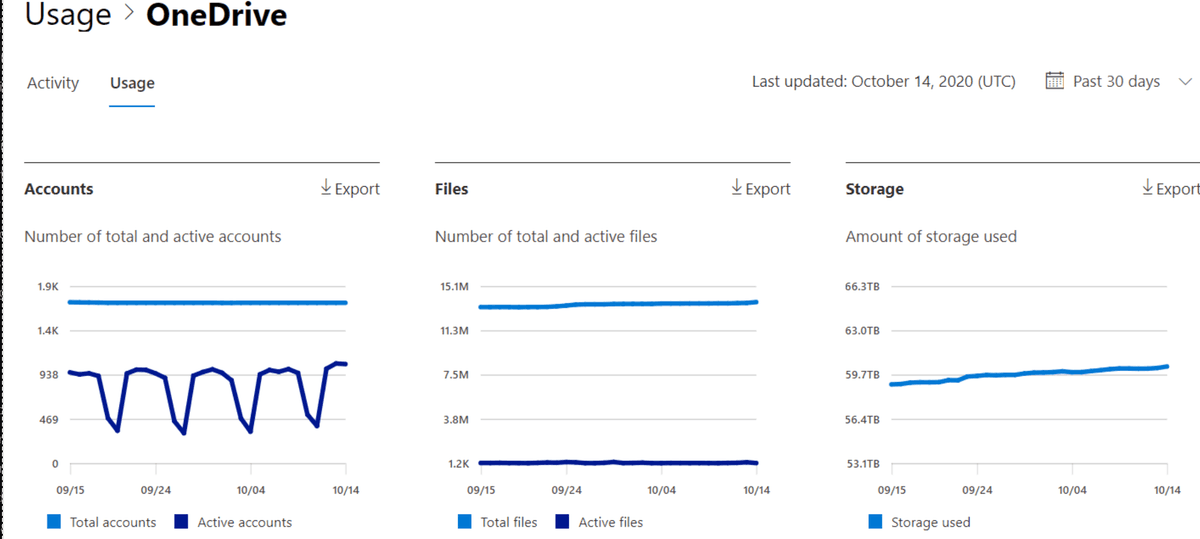OneDrive Analytics: What You Can Track in 2025 (Free vs Business)
Ever wondered if OneDrive can tell you who's actually reading your shared documents? You're not alone. While OneDrive handles file storage and basic sharing, its analytics capabilities are often misunderstood. Many users assume they can track document views, see who spent time on specific pages, or get insights into viewer engagement—only to discover OneDrive's analytics are far more limited than expected.
In this deep dive, we'll uncover exactly what OneDrive can and cannot track, explore the differences between free and business plans, and reveal why organizations handling sensitive documents often need more robust analytics solutions. Whether you're sharing pitch decks with investors, managing due diligence documents, or simply want to understand document engagement, this guide will help you make informed decisions about your document analytics needs.

OneDrive analytics overview
OneDrive offers limited analytics capabilities that vary significantly between free and paid plans. Understanding these limitations is crucial for organizations that need detailed insights into document engagement and viewer behavior.
What analytics are available in OneDrive?
Free OneDrive plan analytics
The free OneDrive plan (5GB storage) provides minimal analytics:
- Basic file activity: See when files were last modified
- Storage usage: Track how much of your 5GB allocation you're using
- File sharing status: Know which files are shared and with whom
- No viewer tracking: Cannot see who actually viewed your documents
- No engagement metrics: No data on time spent viewing or page interactions

Microsoft 365 Business plan analytics
Microsoft 365 Business accounts (starting at $6.00/user/month) provide enhanced analytics through the Microsoft 365 admin center:
OneDrive for Business usage reports
According to Microsoft's official documentation, OneDrive for Business provides the following analytics:
- Files: Number of files in each user's OneDrive
- Active files: Number of files accessed within the reporting period
- Storage used (MB): Amount of storage consumed by each user
- Site ID: Unique identifier for the OneDrive site

Activity reports limitations
Even with Microsoft 365 Business, OneDrive analytics have significant limitations:
- No individual viewer tracking: Cannot see who viewed specific documents
- No page-level analytics: No insights into which pages receive the most attention
- No time tracking: Cannot measure how long viewers spend on documents
- No geographic data: No information about where viewers are located
- No device information: Cannot track what devices or browsers are used
- Limited export capabilities: Basic CSV export without detailed insights
How to access OneDrive analytics
For Microsoft 365 Business users:
-
Access the admin center:
- Go to admin.microsoft.com
- Sign in with your Microsoft 365 admin account
-
Navigate to reports:
- Go to Reports > Usage
- Select OneDrive from the dashboard
-
View usage data:
- Choose the Usage tab
- Select your desired time period (7, 30, 90, or 180 days)
- Export data to CSV if needed
For free OneDrive users:
Free OneDrive users have no access to analytics dashboards. You can only see:
- Basic file information in the OneDrive interface
- Storage usage in account settings
- Sharing status of individual files
Critical limitations of OneDrive analytics
1. No external user tracking
OneDrive cannot track external users who access shared documents:
- Anonymous access: External users accessing via links are not tracked
- No viewer identification: Cannot identify who viewed shared documents
- Limited sharing insights: Basic sharing status without engagement data
2. No document-level engagement metrics
OneDrive lacks essential document analytics:
- No page views: Cannot track which pages are viewed most
- No time tracking: No data on how long documents are viewed
- No completion rates: Cannot measure if viewers finish documents
- No interaction data: No insights into document engagement
3. Privacy and data access concerns
Microsoft's access to OneDrive content raises privacy concerns:
- Microsoft access: Microsoft can access your content for service improvements
- Limited control: Users have minimal control over data collection
- Privacy implications: Content may be used for AI training and service optimization
For a comprehensive analysis of OneDrive's security features and limitations, check out our detailed guide on is OneDrive secure.
When OneDrive analytics fall short
Business scenarios requiring detailed analytics
OneDrive's limited analytics are insufficient for many business use cases:
| Business Scenario | Required Analytics | OneDrive's Limitations |
|---|---|---|
| Fundraising and investor relations | Detailed engagement tracking | No page-level tracking |
| Viewer identification | Cannot identify individual viewers | |
| Geographic insights | No geographic data | |
| Device analytics | No device information | |
| M&A and due diligence | Comprehensive audit trails | Basic activity logs only |
| Page-level analytics | No page-by-page tracking | |
| Time-based insights | No time tracking | |
| External user tracking | Cannot track external users | |
| Legal and compliance | Detailed access logs | Limited audit capabilities |
| Viewer verification | No viewer identification | |
| Geographic restrictions | No geographic controls | |
| Device tracking | No device monitoring |
OneDrive vs Papermark analytics comparison
| Analytics Feature | OneDrive Free | OneDrive Business | Papermark |
|---|---|---|---|
| Basic file tracking | ✓ | ✓ | ✓ |
| Storage analytics | ✓ | ✓ | ✓ |
| Individual viewer tracking | ❌ | ❌ | ✓ |
| Page-level analytics | ❌ | ❌ | ✓ |
| Time tracking | ❌ | ❌ | ✓ |
| Geographic data | ❌ | ❌ | ✓ |
| Device information | ❌ | ❌ | ✓ |
| External user tracking | ❌ | ❌ | ✓ |
| Real-time analytics | ❌ | ❌ | ✓ |
| Export capabilities | ❌ | Limited CSV | Comprehensive exports |
| Dynamic watermarking | ❌ | ❌ | ✓ |
| Screenshot protection | ❌ | ❌ | ✓ |
When to use OneDrive vs. when to upgrade
OneDrive analytics are sufficient for:
- Basic file management: Simple storage and sharing needs
- Internal collaboration: Team document sharing within your organization
- Cost-conscious users: When budget is a primary concern
- Microsoft ecosystem: When working primarily with Office applications
- Non-sensitive documents: General business documents without confidentiality concerns
If you're considering OneDrive for more complex document sharing needs, explore our OneDrive data room overview to understand its capabilities and limitations for business use cases.
Consider upgrading to Papermark when:
- Detailed analytics needed: Understanding document engagement and viewer behavior
- External sharing: Sharing documents with investors, clients, or partners
- Sensitive information: Handling confidential business documents
- Compliance requirements: Industries with strict security regulations
- Due diligence processes: M&A, fundraising, or investment activities
- Advanced security: Need for watermarking, screenshot protection, detailed tracking
Conclusion: OneDrive analytics limitations
OneDrive provides basic file management and limited analytics suitable for simple document sharing. However, for organizations requiring detailed insights into document engagement, external user tracking, or enhanced security features, OneDrive's analytics capabilities are insufficient.
The Bottom Line: OneDrive's analytics are adequate for basic file management but lack the depth and security features needed for professional document sharing. Organizations requiring comprehensive analytics should consider specialized solutions like Papermark that offer detailed tracking, enhanced security, and professional-grade insights.